Hotline : +84 234 3823526 Email : info@morinhotels.com.vn

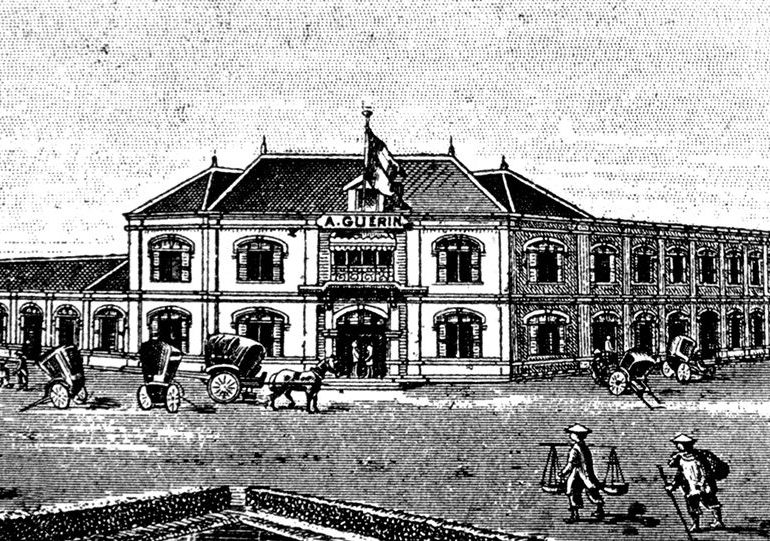
The story of The Morin’s begins classically. At the end of 19th century, Arthur Morin and his Arborist brother, Aimé Morin went to Bac Ky (Northern Vietnamese) for military service. They are the older in a poor pleasant family which has seven children living in a small village Mesnay near Arbois, Jura, France.
Expiry of the army, Morin brothers decided to stay at Vietnam to establish their business. After their death’s mother, Arthur Morin and Aimé Morin decided to take their sisters and brothers to live in Vietnam. Emile Morin and Laure Morin came to Vietnam firstly; then in 1898, Wladimir Morin and Amélie Morin came later.
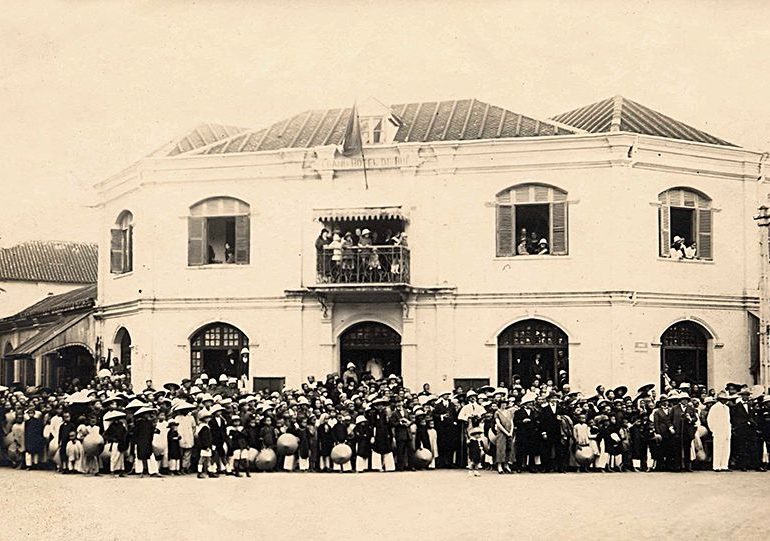
In 1902, Emile Morin and Wladimir Morin with their two sisters Laure Morin and Amélie Morin brought their capital to live in Tourane (Da Nang) to join their relative’s power called “father Gassier” along Han River. It was also time to bear Morin Brothers Collective Company (Société en nom collectif Morin Frères). Wladimir Morin has qualities of an organizer, a negotiator and is particularly innate sense about the most outstanding business.
The company was very prosperous and they became the owner of Grand Hôtel Guérin de Hué.
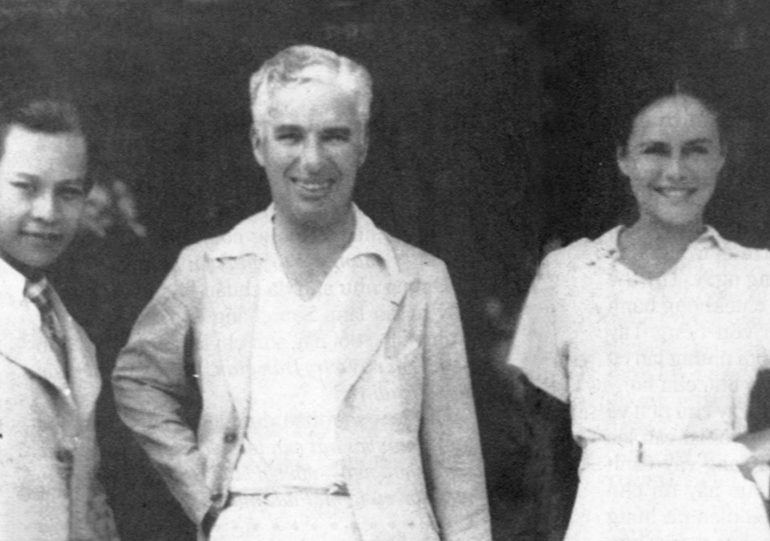
Regarding as the unique hotel in Hue at that time, the building was built in 1901 by Mr. Bogaert, a French businessman. He ran his business by being the owner of Long Tho cement factory. This factory produced the building materials for most of the monuments in Hue during two decades. He used his money to build “Grand Hotel de Hue” in 1901. This hotel welcomed the engineers and technical analysts working in Hue station.
In Hue, Wladimir Morin met Derobert, the industrial businessman of Lyonregion, whose wife is a Vietnamese person and Chinese origin. Wladimir Morin was acquainted with this family and had deep feelings with their only daughter, named Jeanne Pauline. They got marriage in 1914 and continuously made the Morin’s company more prosperous.
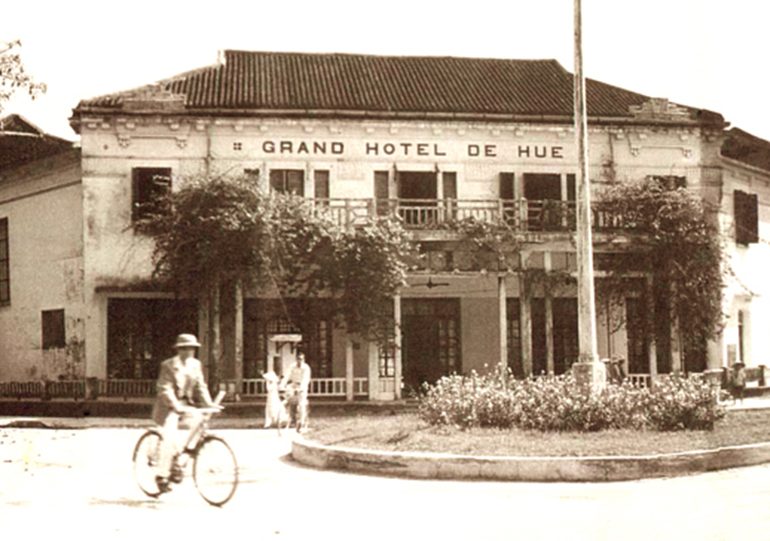
The Morin Brothers Facility in Tourane (Da Nang) and in Hue has been replicated, with the introduction of Morin Ba Na hotels (mountain resorts in the west of Danang), Morin Quy Nhon, Nha Trang and Bach Ma (mountain resorts in western Hue). The Morin brothers were so successful that they acquired most of the city’s stone buildings. From 1930 and until the beginning of the war, we can say that almost all Europeans living in or transit in Hue were welcomed by the Morin family.
Morin Hotel quickly became the center of commercial, cultural and tourist activities of Hue capital under the Nguyen Dynasty. It should also be said that the hotel’s privileged location is an important factor for success. The hotel is located in the central and prominent position of Hue, on the “Quan Lo” on the banks of the Perfume River, right in front of Truong Tien Bridge and near Western public buildings and entertainment centers: West towards the Résidence Supérieure and the garden. The Civil Society, the Sports Club, the Indochina Bank, the Main Public Works Board and the City Park are only a few steps away.
This building became the first “supermarket”, capable of meeting all the requirements of customers. The hotel’s “General Dealer of Consumer Goods” has put up the banner “We can be born in a cradle of Morin and die in a casket of Morin”.
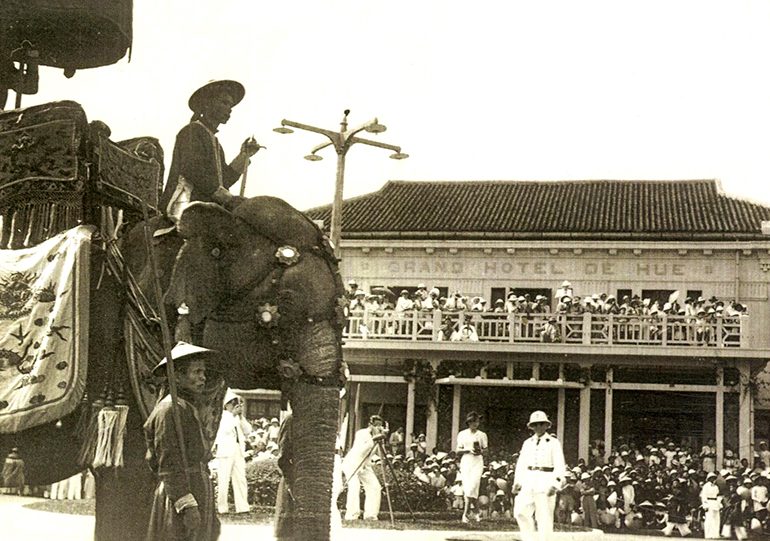
We should also imagine to imagine the atmosphere enveloping the hotel between the two wars: the celebrities gathered here when it was dark to drink aperitif or on the occasion of a grand reception welcoming a floating guest. language. In the unfortunate yellow book, the hotel has retained the famous signatures: the marshals Joffre and Foch; André Malraux; Sylvain Lévy; Léopold Cadière; Pierre Pasquier; Charly Chaplin, Lao king, Sisowath; Louis Finot; J.Y. Claeys; Paul Reynaud, etc.
Morin Hotel was also a cultural venue. The city’s first poetic Cinéma Morin movie theater is located inside the main building, in the location of the current Conference room. The library here also always attracts a large number of readers.
Amélie Morin, the tireless manager, was married to military physician Albert Sallet, the director of the Da Nang Cham Museum, the founder of Ba Na meteorological station. Albert Sallet and Léopold Cadière used a hotel bedroom as the office of the first Franco-Vietnamese Knowledge Association, the Old City of Thanh Hieu, which was once an active center in conservation. landscapes in Hue and surrounding areas from 1914 to 1944.
Finally, Morin Hotel is also the regional tourism office, the correspondent office of the Indochina tourism industry. So the hotel used to be the direct starting point for your excursions and excursions. Thus, in the hottest months, the hotel organizes trips to Ba Na Mountain, a meteorological station founded by Dr. Albert Sallet about 60 km from Hue, which is well known by many elderly people in Indochina. The Morin brothers have built a popular hotel and resort there.
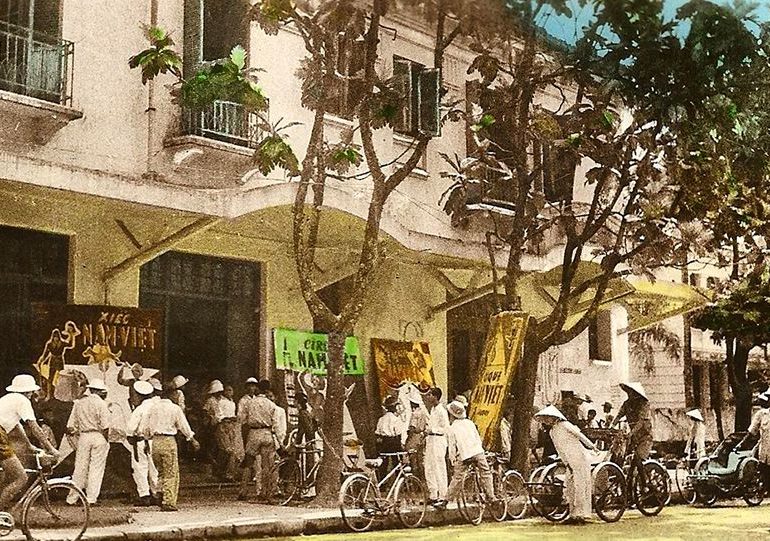
In 1925, a tragedy occurred that overshadowed Wladimir’s happiness: Jeanne died at the age of 29. She was buried in Phu Cam Cemetery, where Wladimir rested in 1943, at age 64.
Jeanne and Wladimir’s three sons: Henri, René and Edmond, succeeded the management of the Grand Hôtel Morin de Hué, despite difficulties due to Japanese occupation and the War. From December 20, 1946 to February 5, 1947, the Morin Hotel was one of the heavily guarded barracks or the gathering place of French citizens and soldiers surrounded by Vietnamese revolutionaries. After the event, the hotel was destroyed and partially burned. In July 1951, the Morin family signed a document of selling the establishment to a Vietnamese businessman, ending 44 years of family management.
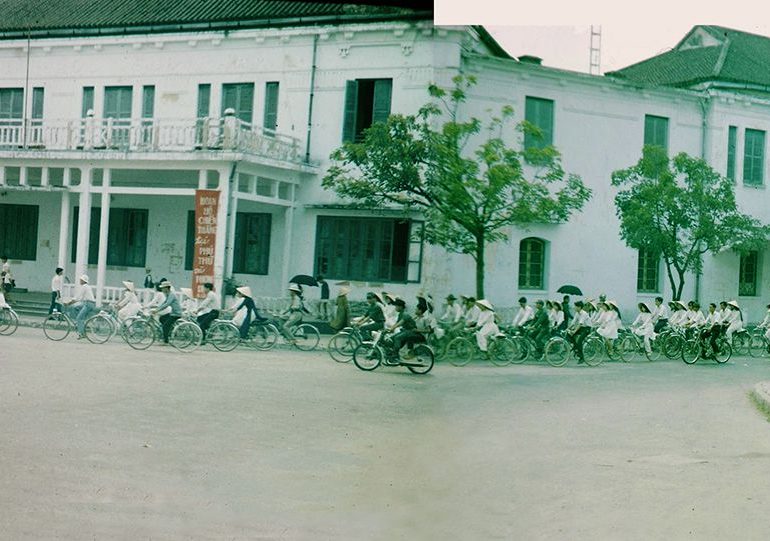
From 1951 to 1995, the building went through many hardships and continued to suffer from climate damage, lack of maintenance and especially because of the war. For example, in 1968, during the “Tet Offensive,” the hotel again suffered heavy losses in this battle in Hue; This is one of the longest and bloodiest battles of the war against the America in Vietnam.
In 1957, this building was used as the headquarters of Hue University. In 1989, after the transfer to the tourist offices of Thua Thien Hue province, the building was once again a mediocre hotel, welcoming backpackers and free tourists. The history of the Grand Hôtel of Wladimir and Jeanne seems to be over.
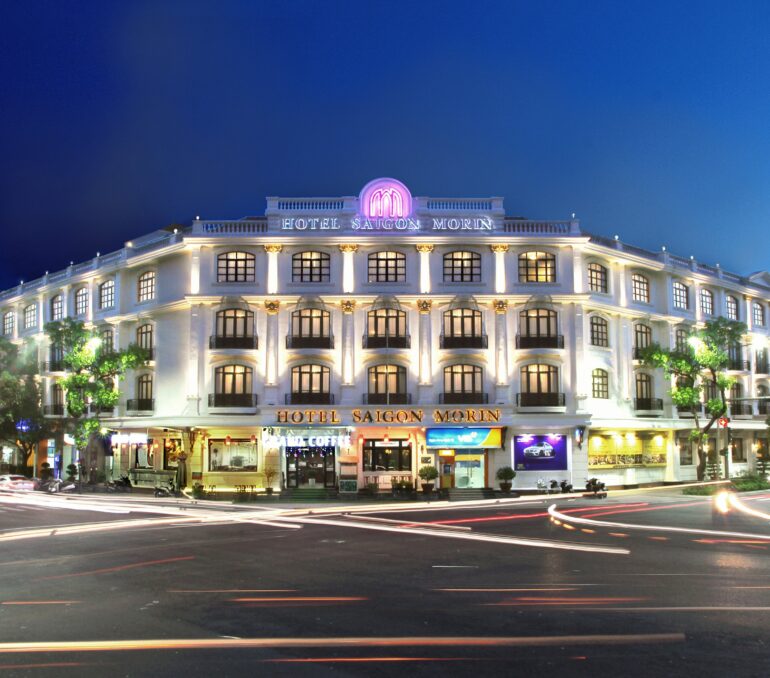
But in the early 1990s, when the country was open to world trade, Thua Thien Hue leaders understood that profits could be made if the tourism industry revived in the ancient capital, UNESCO heritage site. world in 1993. In 1994, Saigon Tourism Corporation (Saïgontourist) won the right to rebuild the hotel.
In 1995, Amélie Morin’s grandson was welcomed by Ngoc Anh, the director of the hotel, right inside the renovated hotel. The two-day dialogue between the two decided to revitalize the links between the old and new hotel management, between the history of the hotel and the past.

Personnel in charge of the restoration work focused on ideas regarding preservation of the old structure. On the other hand, they also accepted the name of the founder to book the hotel. The cooperation between the old and new representatives of the hotel was reinforced by the following three events. In 1998, a bust of Wladimir Morin was erected at the hotel. In 2001, the official director of the hotel of the colonial era, Mr. Edmond Morin, 79, and his family were officially welcomed. 2004: The Old City of the Old Citadel gave the hotel photos of the old Morin hotel chain and the splendor of Hue in the early 20th century. The regular display of these rare photographs has brought Come to the hotel with a new impression. With 25,000 visitors annually, the hotel becomes the most visited Museum in Hue. Wladimir’s 500 photographs and busts are of most interest to travelers, before checking in to their hotel.
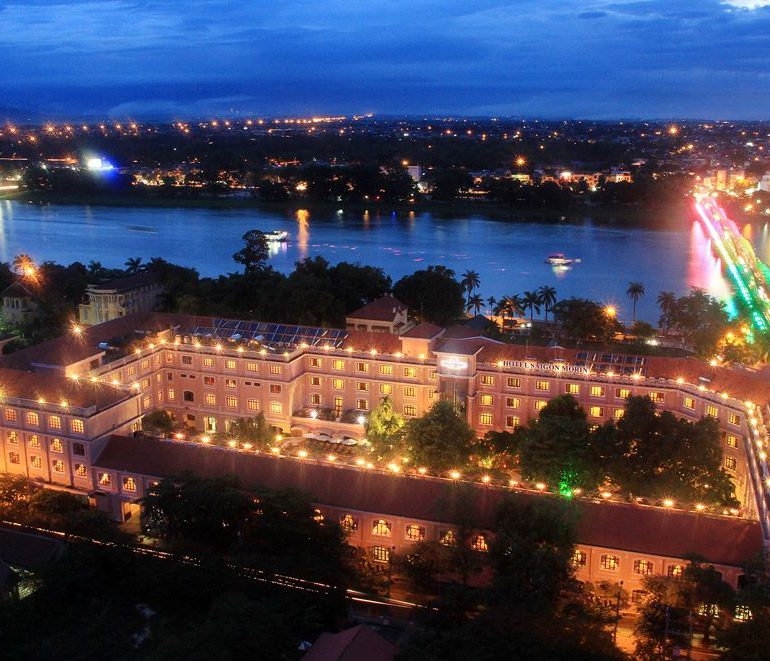
The hotel has no regrets about this historic harmony because thousands of French-speaking guests and people who used to work in Indochina chose the hotel to stay. In terms of accommodation, the commercial success has allowed the hotel to build an additional floor, bringing the total number of rooms to 180 as it is now. The couple Jeanne and Wladimir probably could not have imagined better than having a more beautiful dream of where their lives, love and career were connected; they are fortunate to see their memories honored and their names preserved in a country that has only survived half a century of war. They also will not regret being buried together and watching the grave always bloomed and maintained by the new hotel: it is also the pleasure of the hotel.